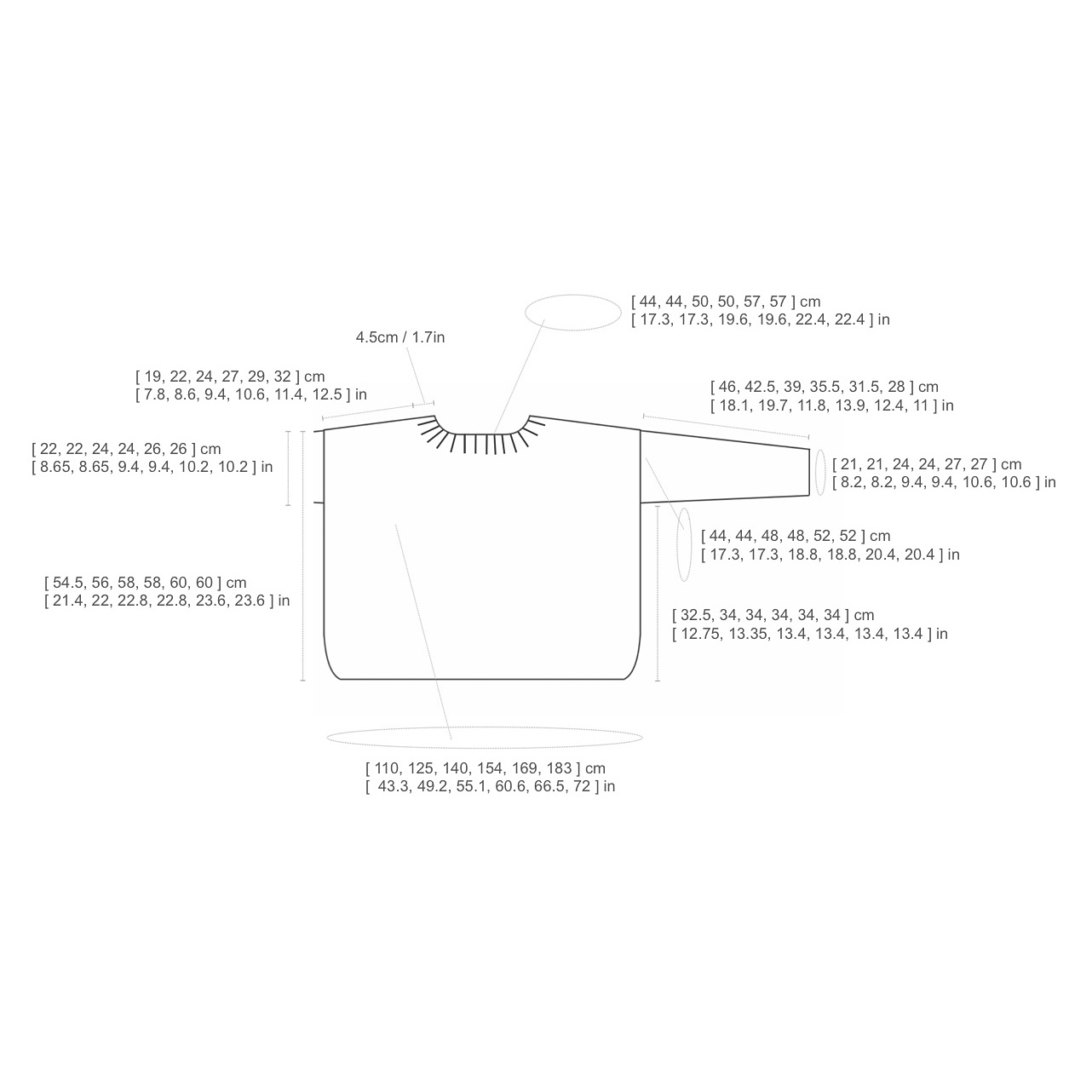Your Cart ()
Your cart is currently empty.
Your cart is currently empty.

“But what does the actual measurement mean? And what even is a measurement that isn’t actual? Does that mean sweaters have a pretend measurement aswell?”
Ok, I hear you. It’s confusing. We need to talk about Ease.
“Hmm, I thought I was asking about actual measurements. But if you would rather talk about ease, we can do that too but can we get back to the Actual Measurements question too?“
Actually (ha ha see what I did there), we have to talk about ease if we’re going to make sense of actual (and not-actual) measurements.
This all has to do with the way that clothes tend to have slightly different measurements from the bodies they are designed to fit over. An example may be helpful here: I have a 42″ bust but the sweaters which I think fit nicest around it, are a bit bigger than that. My socks on the other hand, look a good deal smaller than my feet, when my feet aren’t inside them.
So in my case the actual size of my sweaters is often somewhere around 46-48″, because I like them to be a little loose on me. Meanwhile, loose socks are almost never a good idea, so they are small enough that they have to stretch when I pull them onto my feet.
The difference between the size of your body and the size of the sock or sweater or vest or whatever it is that’s going to fit over it, is called ease. I tend to like my sweaters with between 4 and 8 inches of positive ease, which is the same as saying I like the actual size of my sweaters to be 4-8″ bigger than me. Likewise, my socks have about 10% negative ease, so they are a bit smaller than my feet so that they can stretch over them without any looseness at all.
“Okay, it’s starting to make sense. An actual measurement in a knitting pattern means it’s what the sweater actually measures instead of the body it fits over. That’s actually pretty smart and makes sense. Respect to the knit team who came up with that.“
I think we probably have to thank the tailors from way-back-when for the whole concept of ease, but we don’t need to go off along that tangent right now.
“And the ease thing is about how loose or tight over your body, you want the knitting to be which means you need to know the actual size of the thing you’re making compared to your body size – right?”
Bingo, you’ve got it! And now that you understand about body size versus actual sweater size, we can get to the juicy bit.
It gets even juicier than that?
Oh Yes! Here’s the really cool part. Ease is a bit like the yarn colour or fibre you choose to knit with. It affects the look of your sweater and it’s totally up to you. There’s a great Brooklyn Tweed article here which shows 2 totally different sized people in the same sized sweater. The sweater fits them both but has a different ‘look’ when it’s super-loose from when it’s more fitted, or as you would now say, with different amounts of ease.
Usually pattern designers will tell us how much ease they’ve chosen to include in their design for the look they’ve got on the model. So that tells us how much ease they like. You don’t have to knit it that way. So just like when you decide you’d like to make something in pink tweedy wool which is shown in beige mohair on the model, you can also decide you’d like to make yours with more or less ease. And you do that by looking at what the actual measurement of the sweater is, and choosing a size which has the kind of looseness that you like.
“Ok you’re going to have to help me out here – and please don’t judge me when I ask you this – I don’t really know how much looseness I like. How do I decide how much ease to add if I don’t follow what the designer says?“
You know what? I bet you do know. Think about that t-shirt you love to wear that just always fits right, or your favourite sweater you got from whenever it was. Look at yourself in the mirror in those kind of well-loved garments and see what they’re saying to you ease-wise. Are they loose or close fitting on the chest? Where do they sit on your shoulders? What is it about the fit that you like? Compare those measurements to your body measurements and you can start to build a picture of the fit and ease that you prefer.
“Ok, I’m going to give it a go, but I’m not going to let you get away with that whole ‘it’s totally up to you’ line. I bet you do have a view on what works and what doesn’t – “ease-wise”.“
You’re not going to let it go are you? Well I consulted with Brontë who is, as we all know, never less than perfectly turned out knitwear-wise and ease-wise. Here are her starting points for ensuring a good fit..
“Please say a big Thank you to Brontë for her styling advice. East London and the rest of the world appreciates it.“
I just did. She blushed and says, You’re welcome.